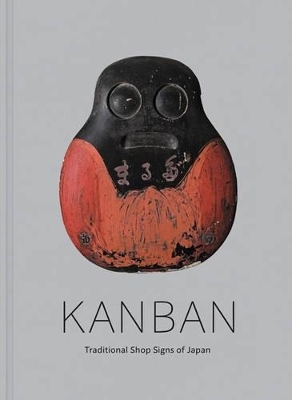
Kanban
Princeton University Press (Verlag)
978-0-691-17647-5 (ISBN)
A glimpse into the markets, crafts, and signage of early modern Japan Kanban are the traditional signs Japanese merchants displayed on the street to advertise their presence, represent the products and services to be found inside their shops, and lend a sense of individuality to the shops themselves. Created from wood, bamboo, iron, paper, fabric, gold leaf, and lacquer, these unique objects evoke the frenetic market scenes of nineteenth- and twentieth-century Japan, where merchants created a multifaceted world of symbol and meaning designed to engage the viewer and entice the customer. Kanban provides a tantalizing look at this distinctive fusion of art and commerce. This beautifully illustrated book traces the history of shop signs in Japan, examines how they were created, and explores some of the businesses and trades they advertised. Some kanban are elongated panels of lacquered wood painted with elegant calligraphy and striking images, while others are ornately carved representative sculptures of munificent deities or carp climbing waterfalls. There are oversized functional Buddhist prayer beads, and everyday objects such as tobacco pipes, shoes, combs, and writing brushes.
The book also includes archival photographs of market life in "old Japan," woodblock prints of bustling marketplaces, and images of the goods advertised with these intricate and beguiling objects. Providing a look into a unique, handmade world, Kanban offers new insights into Japan's commercial and artistic roots, the evolution of trade, the links between commerce and entertainment, and the emergence of mass consumer culture. Exhibition schedule: Mingei International Museum, San Diego April 15-October 15, 2017
Alan Scott Pate is an independent scholar who has curated exhibits and written for many journals on Japanese handcrafts and antiques. He is the author of Ningy?: The Art of the Japanese Doll and Japanese Dolls: The Fascinating World of Ningy?.
Foreword-Rob Sidner 7 Introduction 9 The Neon Scramble Kanban: Signs of the Times 1 Fingerprints of the Artisan 19 Visual Records Scenes in and around the Capital Woodblock Prints 2 The Kanban of Nihonbashi 37 3 The Way of the Merchant 47 4 Kanban and Kabuki: Product Placement and the Edo Stage 55 5 Collectors and Collections 61 The Sugiura Collection The Peabody Essex Museum Collection The Showa Neon Takamura Kanban Museum Collection 6 Categorizing Kanban: The Catalogue 69 Medicine Tobacco Shops Mokei Kanban: Shop Signs as Sculpture Yoki Kanban: Container Shop Signs Consumer Goods: Kanban and Daily Necessities Kanban and Specialty Trades Kanban and Pastimes Notes 161 Glossary 165 Bibliography 168 Index 174
| Erscheinungsdatum | 22.04.2017 |
|---|---|
| Zusatzinfo | 155 color illus. |
| Verlagsort | New Jersey |
| Sprache | englisch |
| Maße | 241 x 286 mm |
| Gewicht | 1162 g |
| Themenwelt | Kunst / Musik / Theater ► Kunstgeschichte / Kunststile |
| Geschichte ► Allgemeine Geschichte ► Neuzeit (bis 1918) | |
| Geisteswissenschaften ► Geschichte ► Regional- / Ländergeschichte | |
| Geschichte ► Teilgebiete der Geschichte ► Kulturgeschichte | |
| ISBN-10 | 0-691-17647-7 / 0691176477 |
| ISBN-13 | 978-0-691-17647-5 / 9780691176475 |
| Zustand | Neuware |
| Haben Sie eine Frage zum Produkt? |
aus dem Bereich


